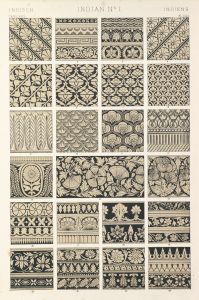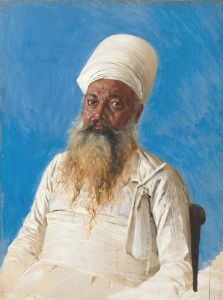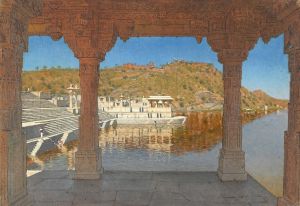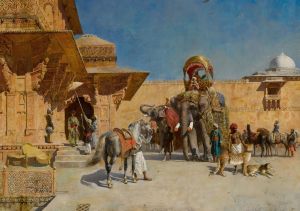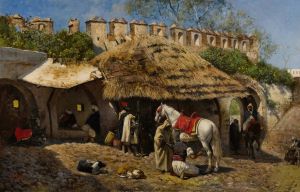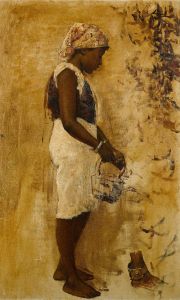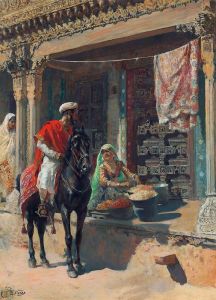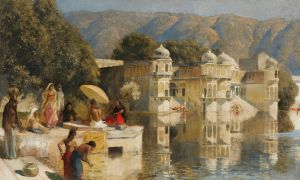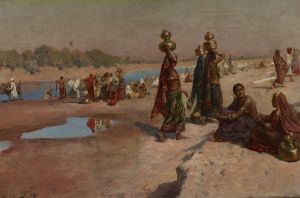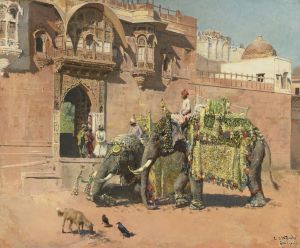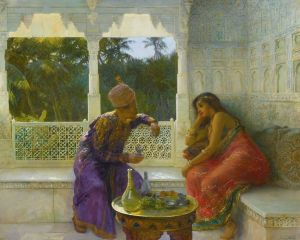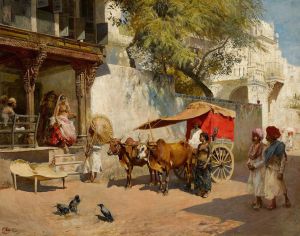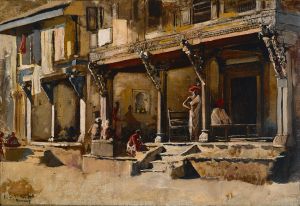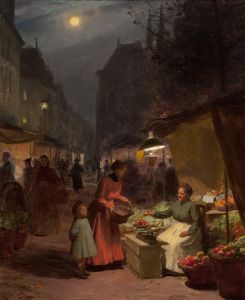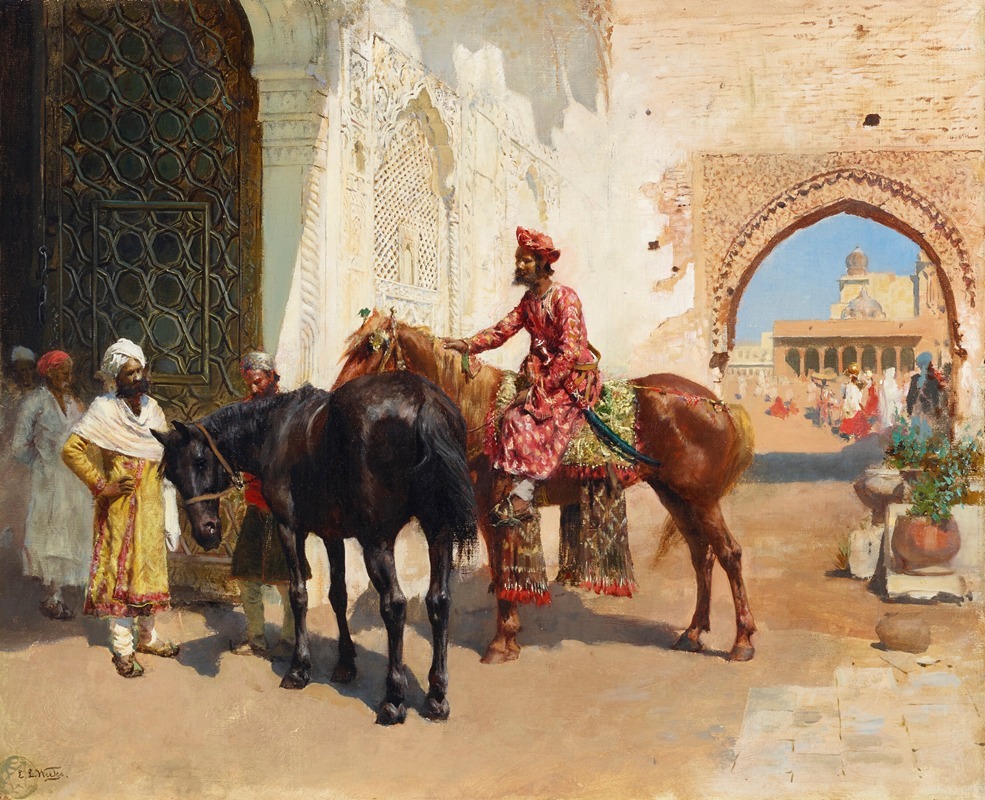
Persian Horse Seller, Bombay
A hand-painted replica of Edwin Lord Weeks’s masterpiece Persian Horse Seller, Bombay, meticulously crafted by professional artists to capture the true essence of the original. Each piece is created with museum-quality canvas and rare mineral pigments, carefully painted by experienced artists with delicate brushstrokes and rich, layered colors to perfectly recreate the texture of the original artwork. Unlike machine-printed reproductions, this hand-painted version brings the painting to life, infused with the artist’s emotions and skill in every stroke. Whether for personal collection or home decoration, it instantly elevates the artistic atmosphere of any space.
Edwin Lord Weeks was an American artist known for his Orientalist paintings, which often depicted scenes from his travels in the Middle East, North Africa, and South Asia. One of his notable works is "Persian Horse Seller, Bombay," which captures a vivid scene from the bustling city of Bombay, now known as Mumbai, in India. This painting is a testament to Weeks' fascination with the exotic and his keen eye for detail and composition.
Born in Boston in 1849, Weeks was part of a generation of artists who were captivated by the allure of the East, a fascination that was fueled by the colonial expansion and increased accessibility of travel during the 19th century. Weeks studied in Paris under the tutelage of renowned artists such as Léon Bonnat and Jean-Léon Gérôme, both of whom were influential in shaping his artistic direction towards Orientalism.
"Persian Horse Seller, Bombay" is a fine example of Weeks' ability to capture the vibrancy and diversity of life in the regions he visited. The painting portrays a Persian horse seller amidst the lively and colorful backdrop of Bombay. The scene is bustling with activity, showcasing a variety of characters, each engaged in their daily routines. The horse seller, central to the composition, is depicted with meticulous attention to detail, highlighting Weeks' skill in rendering textures and expressions.
The setting of Bombay during the late 19th century was a melting pot of cultures, with influences from Persian, Indian, and British colonial presences. Weeks' painting reflects this cultural amalgamation, offering a glimpse into the dynamic interactions between different communities. The choice of a horse seller as the subject is significant, as horses were not only a means of transport but also a symbol of status and wealth, making them an important aspect of trade and commerce in the region.
Weeks' use of color and light in "Persian Horse Seller, Bombay" is notable. He employs a rich palette to bring out the vibrancy of the scene, with warm tones that suggest the heat and dust of the Indian environment. The play of light and shadow adds depth to the composition, enhancing the realism and bringing the scene to life.
Throughout his career, Weeks was praised for his ability to capture the essence of the places he visited, and "Persian Horse Seller, Bombay" is no exception. His works were well-received in both Europe and America, and he exhibited regularly at the Paris Salon and the Royal Academy in London. Weeks' paintings are celebrated for their ethnographic detail and their ability to transport viewers to distant lands, offering a window into the cultures and landscapes that fascinated him.
In summary, "Persian Horse Seller, Bombay" by Edwin Lord Weeks is a remarkable piece that exemplifies the artist's Orientalist style and his dedication to capturing the diverse and vibrant life of the regions he explored. The painting stands as a historical document, reflecting the cultural interactions and the bustling atmosphere of Bombay during the late 19th century.





